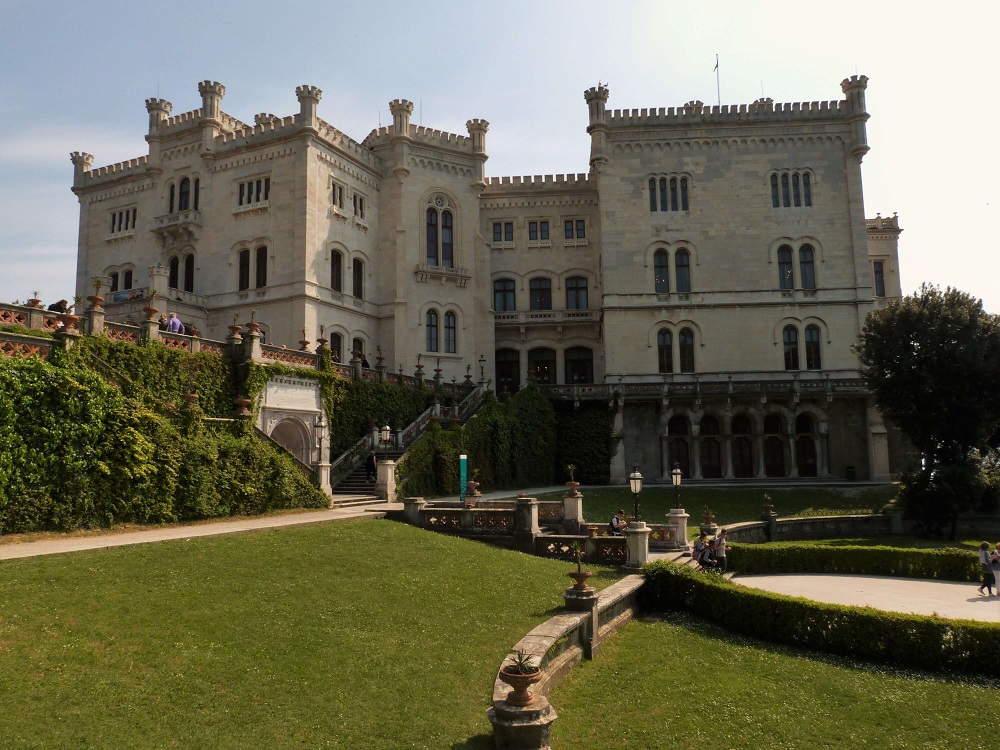
The first thing you’re treated to on your arrival from Slovenia is an incredible view over Trieste and the gulf. This took me completely by surprise, as I didn’t expect the area to be so mountainous – in fact it took another 10-15 minutes of winding roads to reach the city centre below.
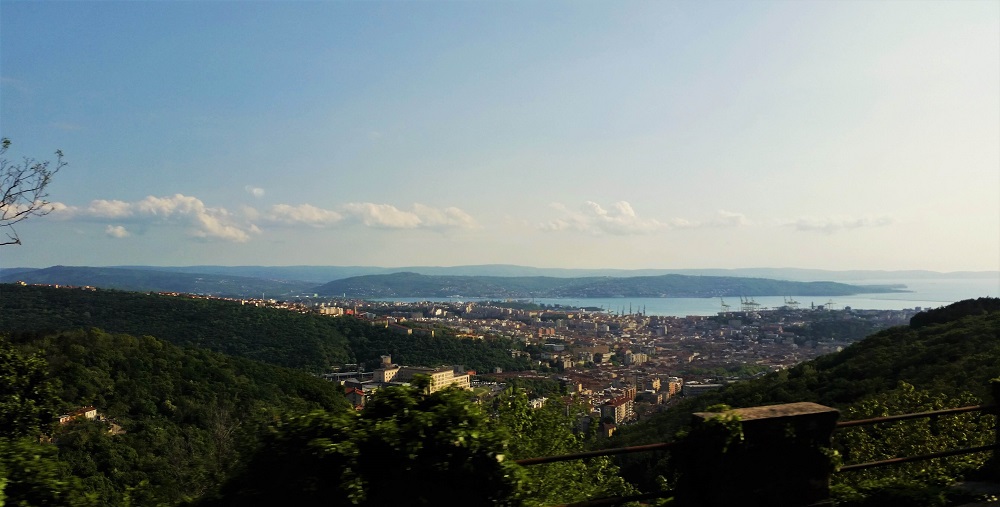
As the bus carried on through the centre, I caught glimpses of regal-looking Austrian architecture, narrow streets and rows of grand buildings – a clear sign of the city’s unique status within Italy and its greater position in Europe. But at the bus station, I was met by a fleet of parked mopeds – a clear reminder that for all its history, the city’s character today is definitely Italian.
So what exactly makes Trieste so unique? Check out the city’s location on a map and you’ll get a clue: situated on the very edge of Italy, Trieste lies at the crossroads of Italy and Slovenia, close to both Austria and Croatia. In short: the crossroads of Central and Mediterranean Europe.
A brief history of Trieste
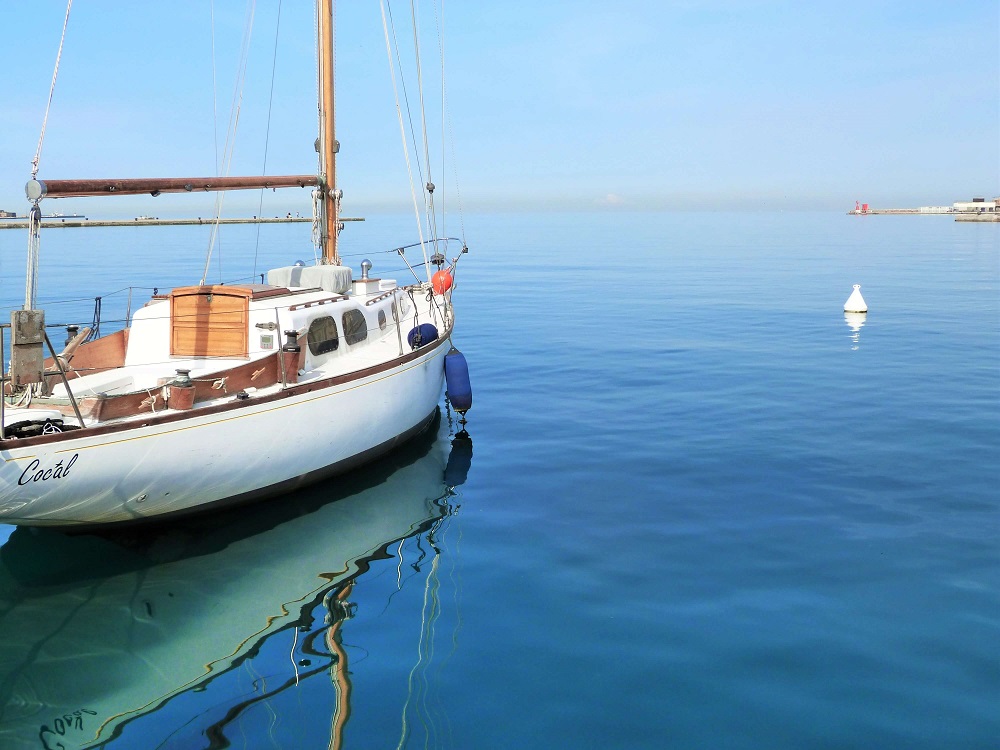
Trieste has long been an important port city and in the 13th century, this trade grew to compete with Venice. In 1382, the city volunteered to join the Austrian Empire, where the city enjoyed a great degree of freedom and protection from Venice, allowing it to flourish commercially. This began almost 600 years of Austrian influence in the city. Trieste grew to become the fourth biggest city in the Austrian Empire, before being annexed by Italy in 1915.
Unlike most of Italy, Trieste has historically been very multicultural. In fact, at the turn of the century, Trieste had more Slovenes than any other city – despite not even being in Slovenia. Thanks to its historic links to Austria, the city was home to many German speakers, but there were also substantial communities of Serbs and Greeks and too, as evidenced by the Greek and Serbian churches.
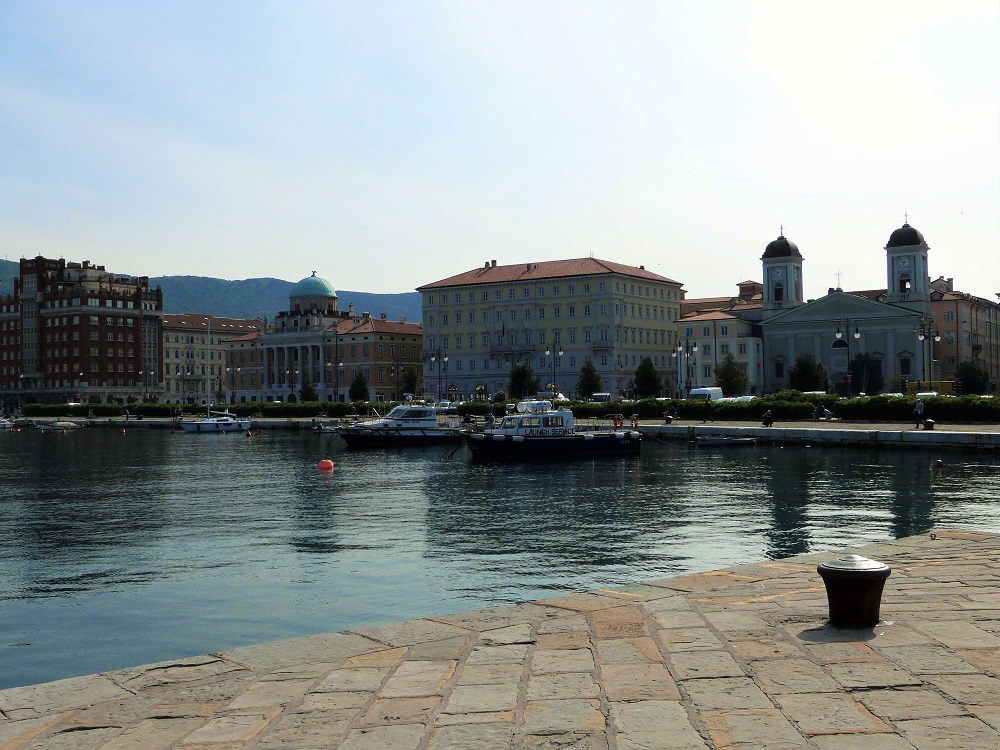
And despite being relatively unknown internationally today, the city was deemed important enough to be made an independent city under rule of the United Nations after World War II from 1947-1954.
What to see on a day trip to Trieste
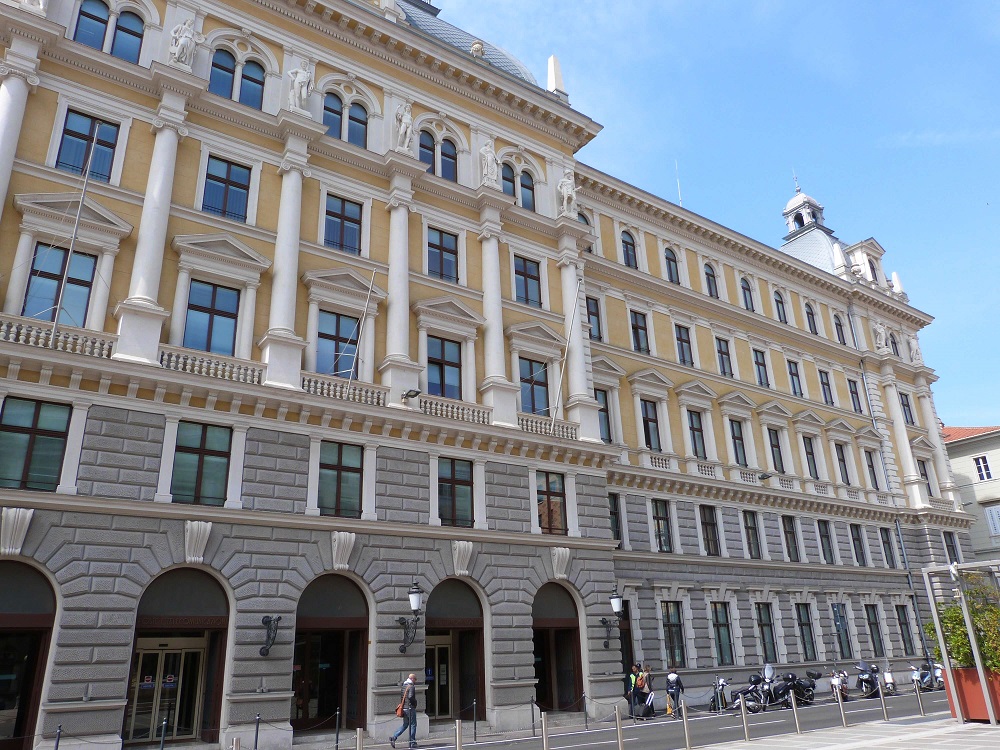
Trieste’s colourful history is on show throughout the city, which I explored as part of the city walking tour, given daily at 10am by the local tourism office. (Unfortunately, I was the sole non-Italian speaker on my walking tour and my guide was definitely not happy to have me. While she regaled the others with humorous anecdotes and stories that they were all lapping up, I was given a very brief summary of each building, before we briskly moved on.)
Interestingly, the majority of tourists I encountered in Trieste were Italians (including what must have been every single Italian schoolchild ever), which gave more weight to the feeling that Trieste is possibly Italy’s least Italian city.
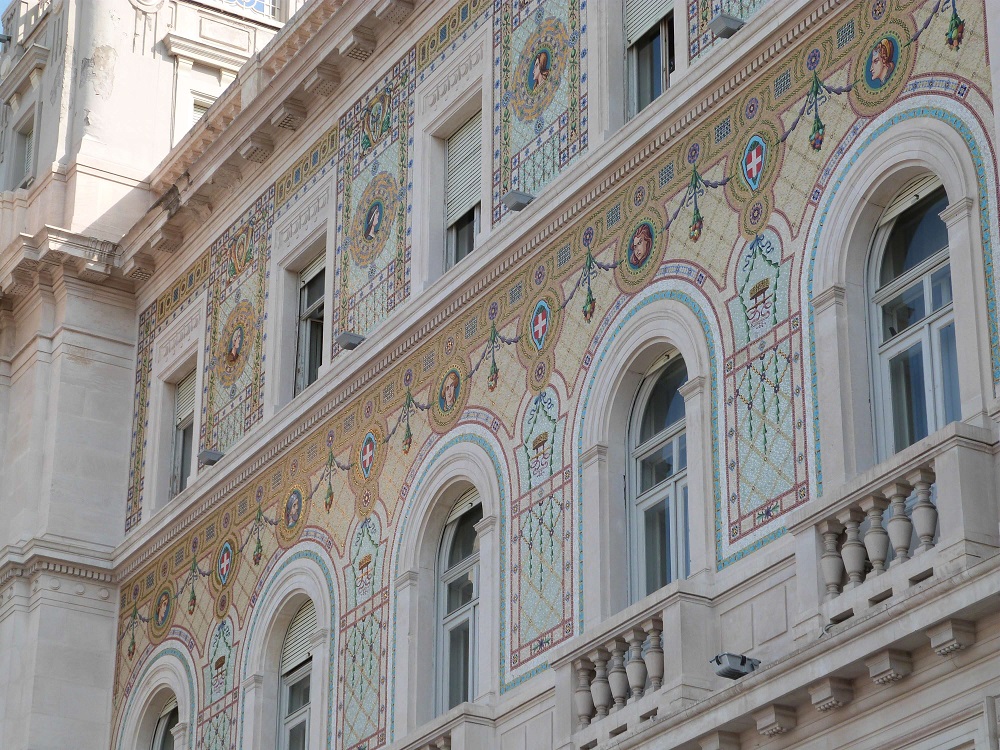
The centre of the city is made up of loads of beautiful Viennese-style palaces. They are kept in beautiful condition (Trieste is today one of the richest regions of Italy). For starters, check out the palaces on sea-facing Unity Square. Found just around the corner, the Stock Exchange is another beautiful building.
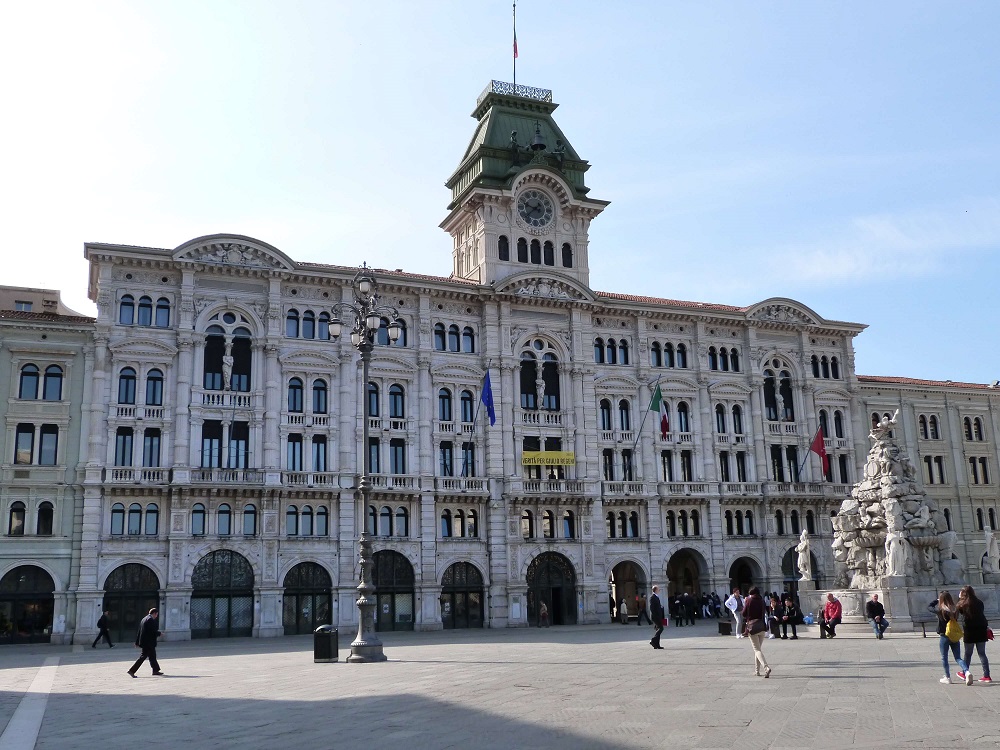
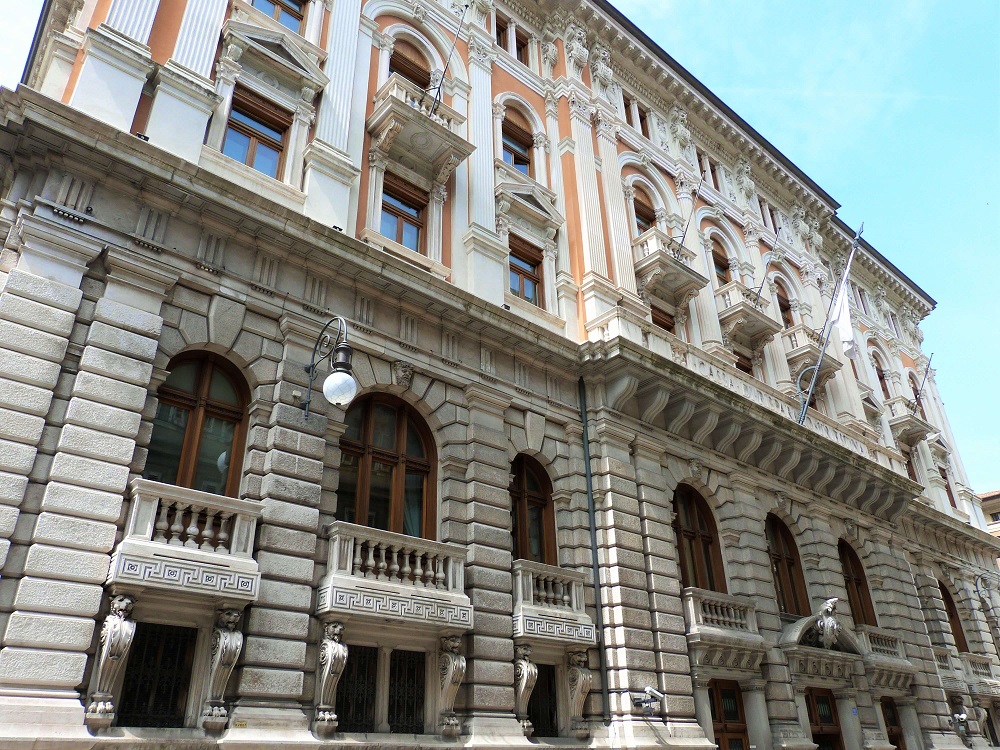
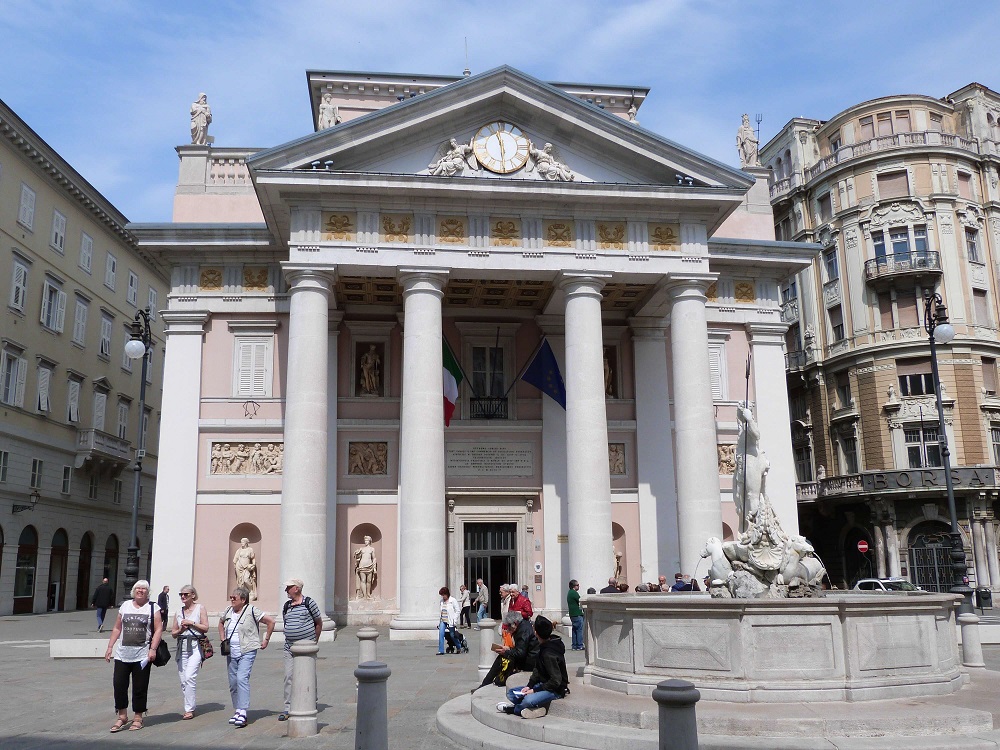
The Stock Exchange
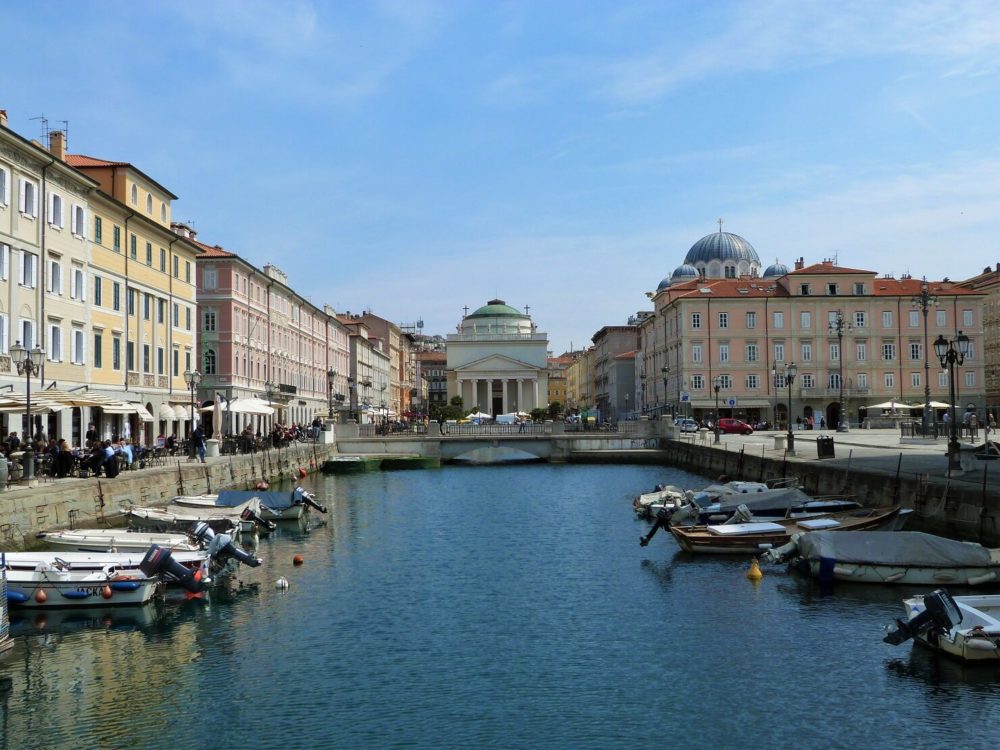
The Grand Canal
From Unity Square, our tour took us to the Grand Canal, probably the most famous spot in the city. While it might not have much on Venice, this long canal leads to the beautiful Saint Antonio Church and offers some great views and photo opps. The buildings aligning each side are former factories, now housing nice cafes and restaurants. Here you can also find a statue of James Joyce, the famed Irish author who lived in Trieste for many years in the early 1900s.
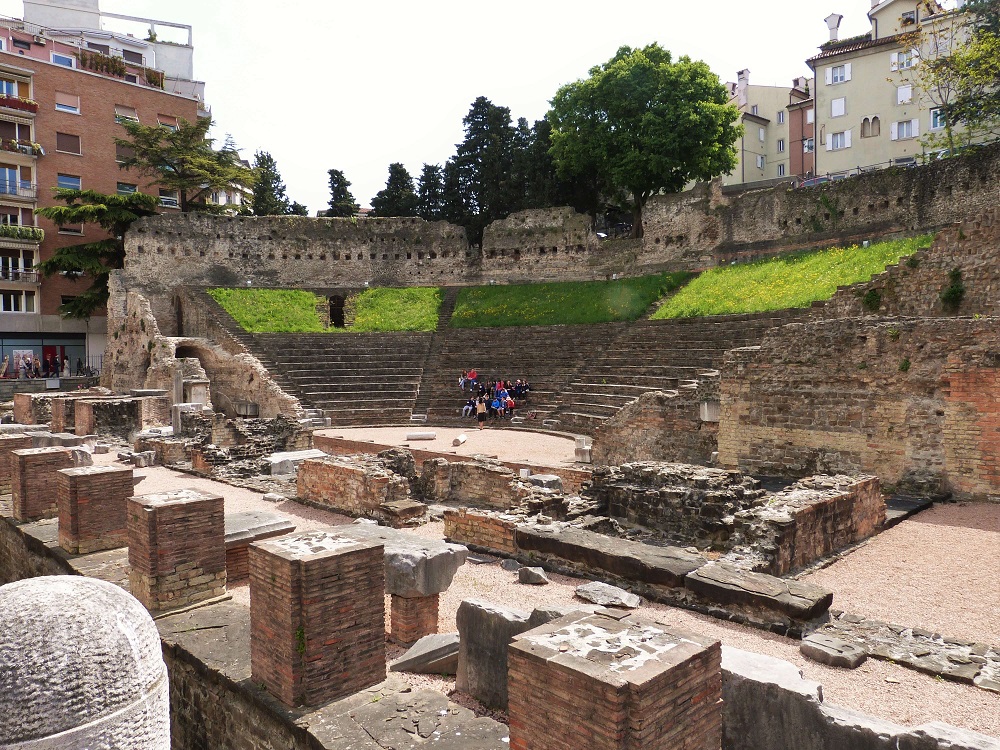
Heading ‘in land’, we then visited the Roman theatre, another indicator of the city’s former importance. Amazingly, the location of the Roman theatre had been known by locals for generations, but no-one really bothered to uncover it until the 1930s.
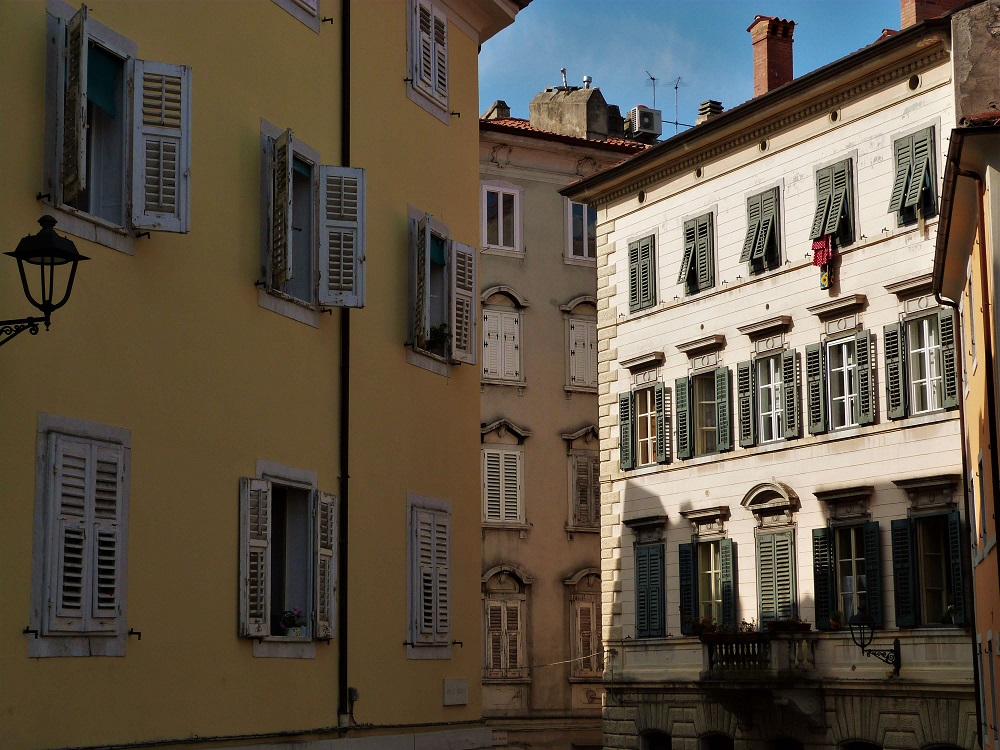
The Roman theatre sits on the edge of the city’s old town, the most Italian-feeling area of Trieste. Up steep steps and winding lanes, you can see narrow alleyways and colourful buildings, interspersed with historic gems, including the old city gate and an archway reportedly used by King Richard of England on his journey home from the Crusades.
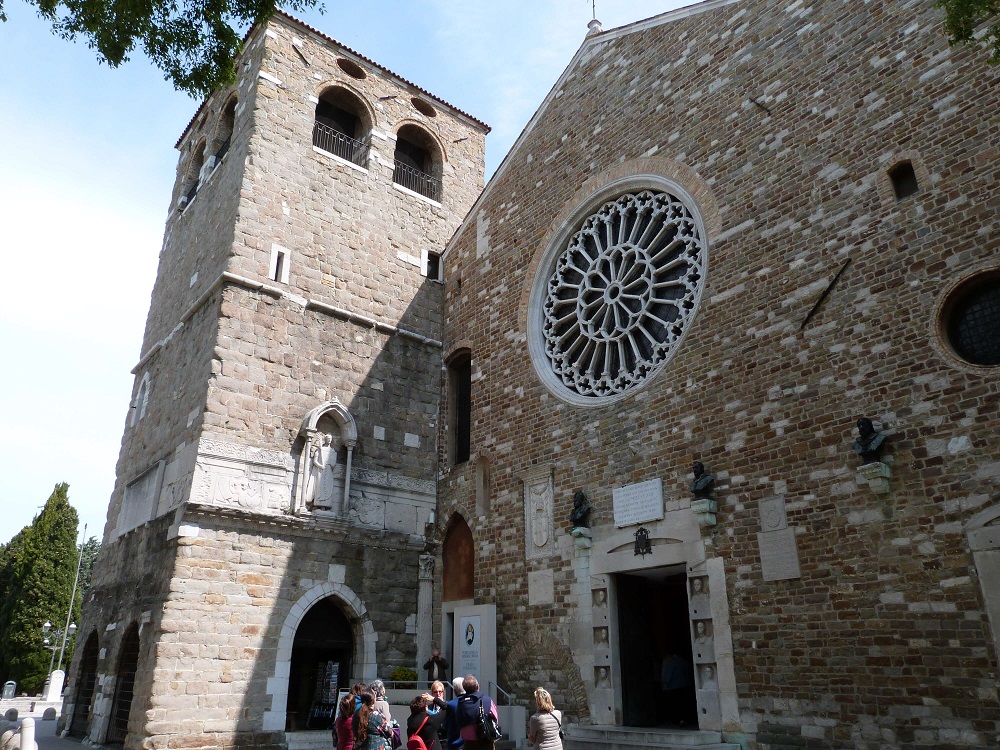
At the crux of the hill, you’ll find the Trieste Cathedral, an ancient building with a beautiful, traditional façade. It’s worth the sweaty trek up, if only for the cool interior and beautiful views over the city.
Miramare Castle

Another gem in the crown of Trieste is Miramare Castle. Located on the seafront, just thirty minutes north of the city, the castle is easy to reach and makes a great finish to your day trip to Trieste.
The castle and the gardens were built by Archduke Ferdinand for his wife Carlota, shortly before his assassination in Mexico. But instead of reading about the fairly dull history of the castle, why not look at these pretty pictures instead?
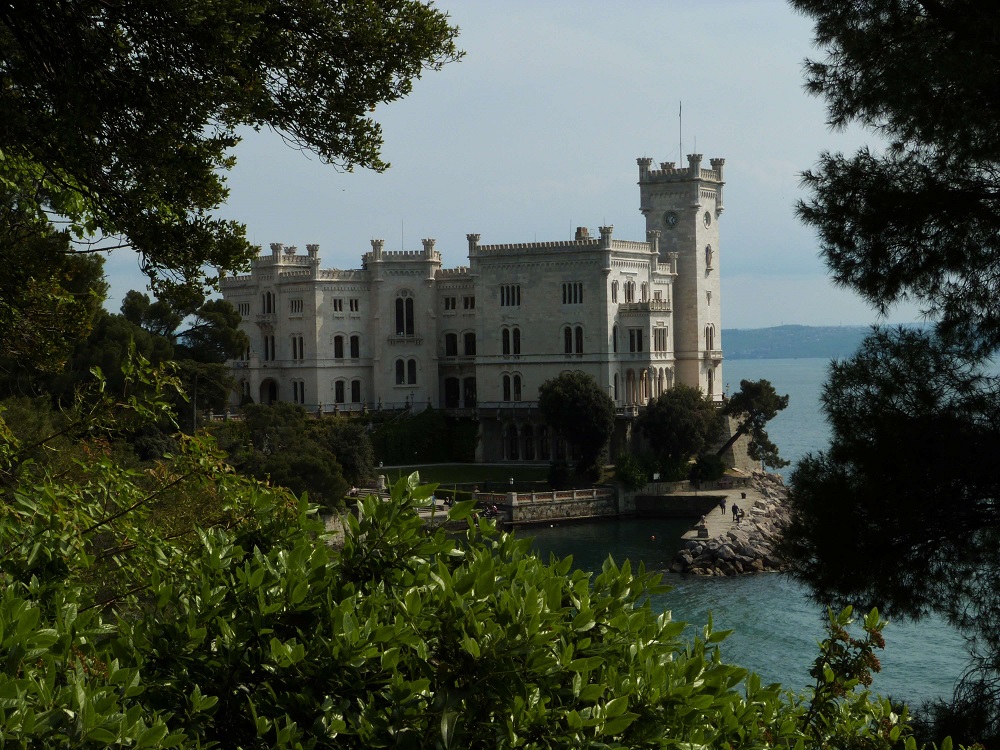



How to get to Miramare Castle? Simply take bus 6 from opposite the train station heading to Grignano. Get off the bus just before it starts heading uphill (which is not what I did – I then got pretty lost). The stop is apparently called Viale Miramare, then simply walk through the car park.
Thoughts on Trieste
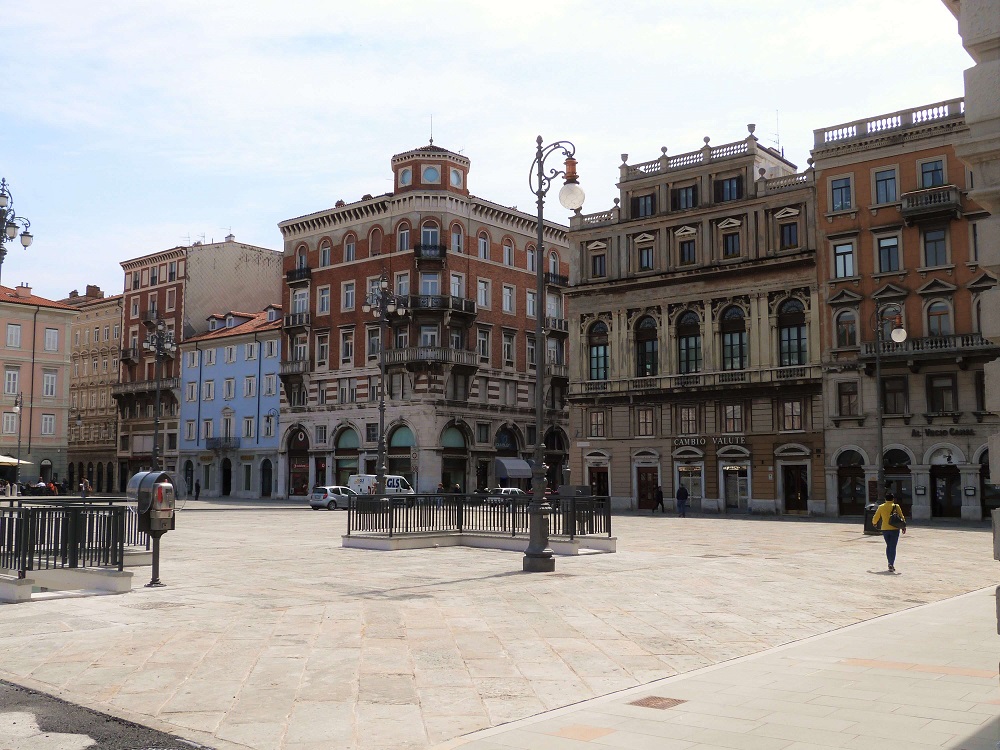
I was really taken with Trieste, pretty much from the moment I saw it from the top of the hills. The city has all the great appeal of a ‘classic’ Italian city – the Roman ruins, the food, the ice cream – but with an ‘extra’ layer of added history on top. Walking around, you really would be forgiven for thinking you were in Vienna.
What’s more, I felt like I had the city to myself. There were very few tourists and hardly any international ones.
The city was named the most underrated destination by Lonely Planet in 2012 and it definitely feels like you are discovering a hidden gem when you arrive. Definitely worth visiting.
Getting to Trieste from Ljubljana
Buses leave from outside Ljubljana’s train station regularly and cost €5-10 (be aware that the bus station normally adds a ‘reservation fee’ – you can avoid this by buying on the bus directly). I paid €7 there, €6.60 back – both including €1.50 fee.
The journey takes around 1 hour 44 minutes. Sit on the right-hand side of the bus going to Trieste for the best views.
I would recommend getting the 0750 bus, which arrives in Trieste at 0925, just in time for the 1030 walking tour. However, be aware that very little is open at this time – it’s a lot easier to pick up a croissant or some breakfast in Ljubljana before leaving.


Amazing post and photos, John! I remember when you texted me that we’re in the same country and I was so confused, haha. I definitely need to visit it when I go to Ljubljana, though I might want to stay overnight to take some night shots 😀
You definitely should, it’s a great place! I can imagine you’d get some great night shots from the top of the hill.
I nearly tagged on Trieste to my Slovenia trip too but ended up a bit too lazy! One to go back to though, I love these slightly more unknown, low-key Italian cities.
I hate to say it but I think you missed out Luce! Trieste makes a really good day trip and its history gives you a different view of the region – I really liked it.
Fascinating – I had no idea this Italian city was so Austrian! Very unexpected – and very pretty. Is there more info coming about the food?
Haha unfortunately not Anna, I literally just had a pizza! But I can imagine it’s good!
Found your site while looking for some weekend travel inspiration and am loving it. Glad that you were able to visit Trieste, my current home city, and see its charms! I love it here but I’m always unsure whether day visitors will be able to appreciate it. Next time you must spend a little time on the Carso and visit an osmizza!
Glad you liked the post Erin, thanks for the tips! What a great city to live in 🙂